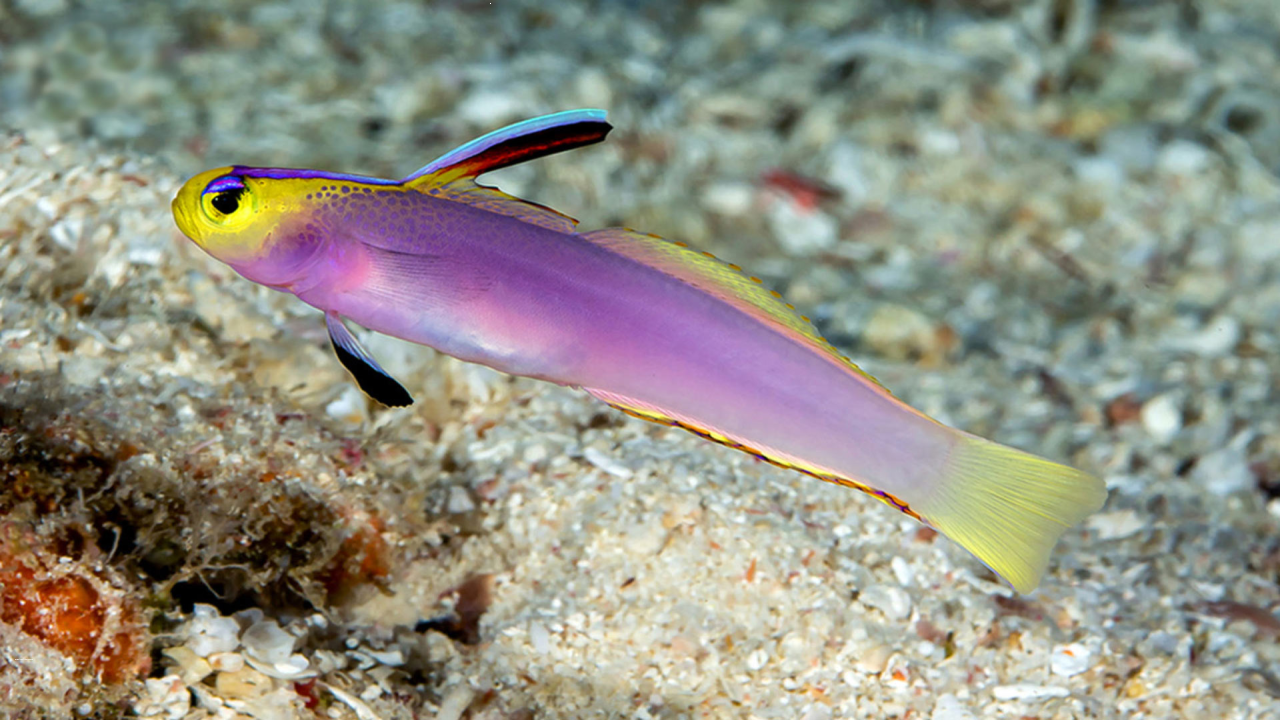What is Nemateleotris lavandula?
Scientists from the Australian Museum Research Institute, the University of Sydney, and the Museum and Art Gallery of the Northern Territory have identified a new species of the genus Nemateleotris. The lavender-blushed dartfish, or Nemateleotris lavandula, was discovered in the western and central Pacific Ocean.
What are Dartfish?
Nemateleotris belongs to the bony fish family Gobiidae, which includes dartfish. Dartfish are small, brightly colored, elongated, and moderately compressed fishes. They are known for their elongated pennant-like first dorsal fin, which they repeatedly flick back and forth, often in sync with their pelvic fins.
Dartfish are typically found near or in coral reefs, hovering close to the substrate in areas that have sand channels and loose coral rubble. They usually measure no more than 7 cm (2.8 inches) in length and feed primarily on plankton and other small invertebrates that they pick out of the water column.
Meet Nemateleotris Lavandula
Nemateleotris currently includes five recognized species native to the Indian and Pacific oceans. The lavender-blushed dartfish, Nemateleotris lavandula, is the newest addition to this genus. The species was previously mistaken for the Helfrich’s dartfish, Nemateleotris helfrichi. The molecular analysis revealed a difference of 1% in sequence data between both species, in addition to differences in morphometric measurements, live, and preserved coloration details.
Nemateleotris lavandula is small in size, measuring only 5 cm (2 inches) in length. The species has a lavender to lilac body that becomes increasingly pale toward the caudal peduncle. It is widespread across much of the western and central Pacific Ocean, including Yakushima Island in southern Japan, the Caroline Islands, the Marshall Islands, and the Mariana Islands, among others.
The lavender-blushed dartfish is usually found in seaward sand channels and rubble pans adjacent to coral reefs at depths between 25-100 m (82-328 feet). It is most commonly observed as single or paired individuals, with juveniles sometimes in small groups, often mixed with other plankton feeders.
Month: Current Affairs - March, 2023
Category: Environment Current Affairs • Science & Technology Current Affairs


